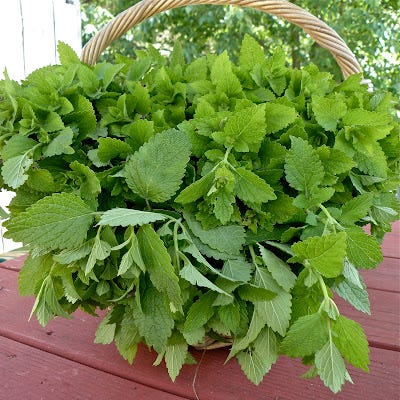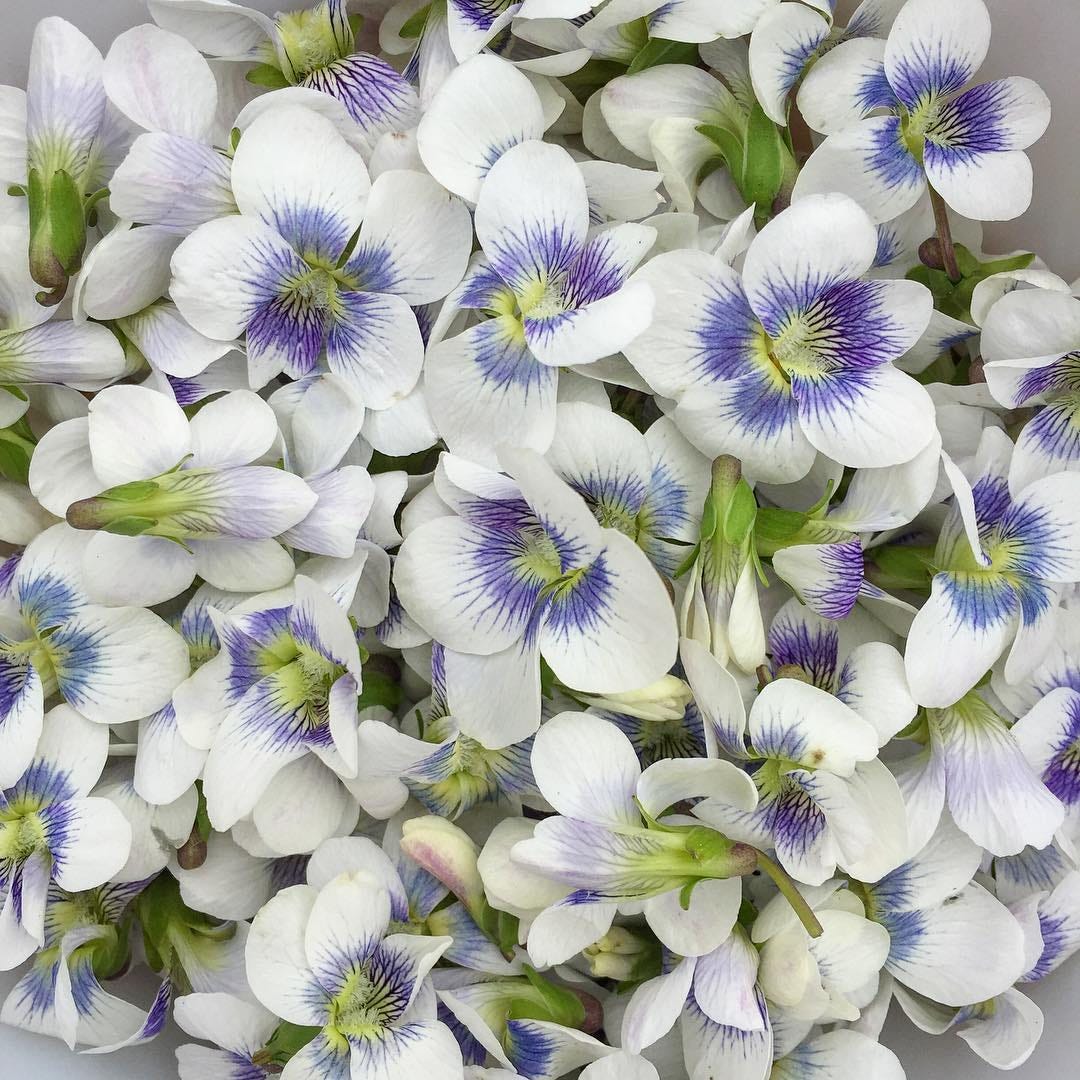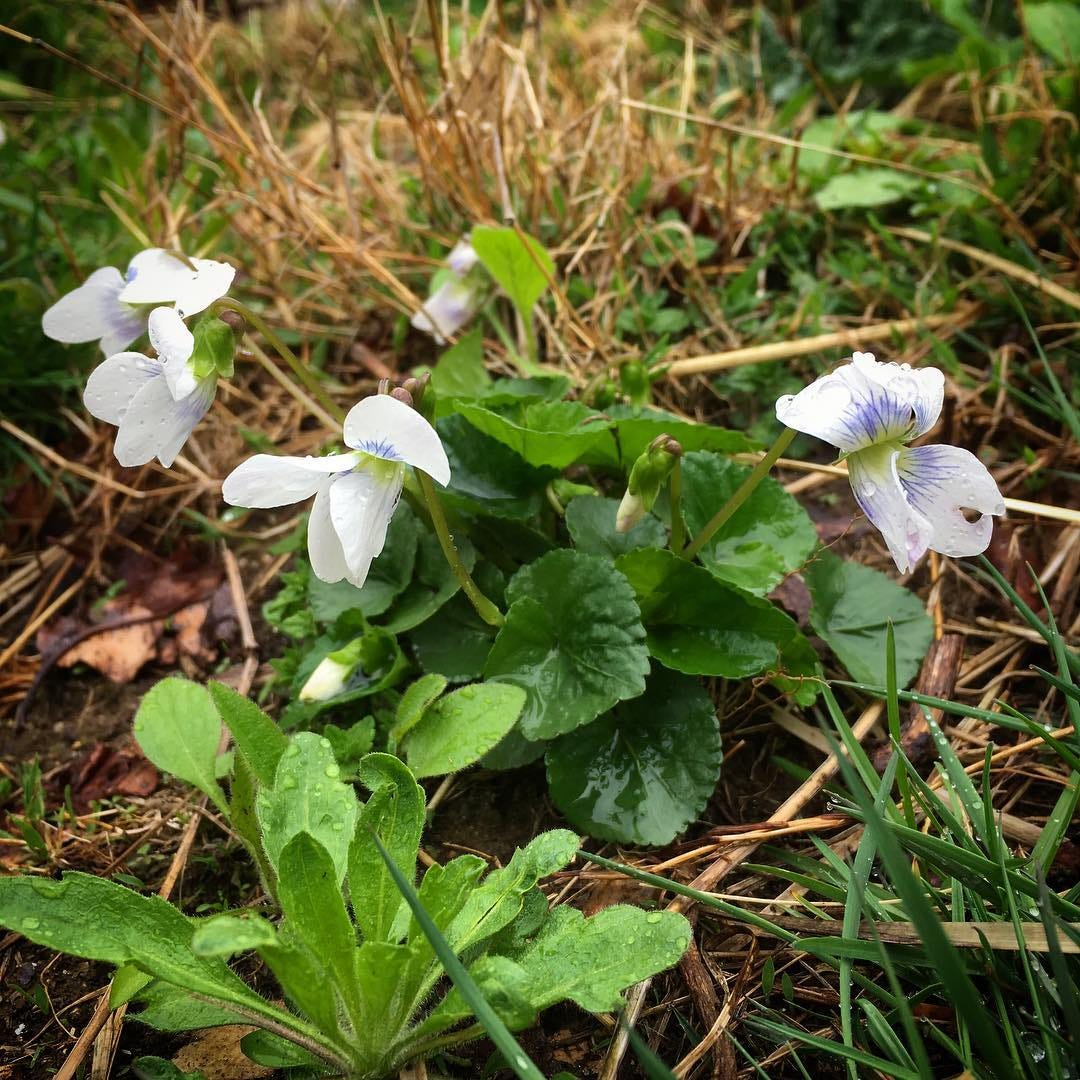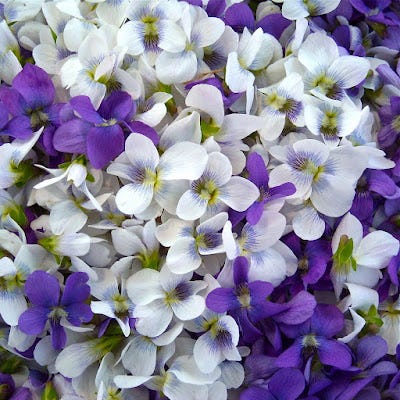 |
| spring elecampane |
Inula helenium – Elecampane
Family: Asteraceae
Inula helenium is native to Europe and Asia, where it has a long history of medicinal use in European and Ayurvedic traditions. It has made itself at home, gently so, throughout parts of "North America," seemingly preferring damp areas with dappled sunlight.
Nicholas Culpepper says, “'It groweth in moist grounds and shadowy places oftener than in the dry and open borders of field and lanes and other waste places...”
It’s a mighty herbaceous perennial plant, with large leaves and a thick stem. It grows to about 3-6 feet tall, though some on the little acre we care for have reached over 6 feet. The large leaves are toothed, with the lower ones stalked and the higher leaves embracing the stem. They’re lance-shaped, toothed, velvety green on the upper sides and lighter on the underside due to heavier fuzz, and they grow up to 12 inches or so long at the base of the main stem, growing shorter as they travel up the stem.
Each plant produces several flower heads, each giving life to 50 to 100 yellow ray flowers, and 100 to 250 disc flowers, blooming from June through September, depending on the region. "Mine" tend to begin blooming mid-to-late July.
The root is thick with many branches. It’s fragrant with a sweet, camphor-like aroma (which I LoVe). The character of the root is mucilaginous and bitter.
Other species of this genus engaged medicinally are I. japonica, I. britannica, and others. I'm only familiar with I. helenium.
Harvest: Root (2-5 years old) ideally in autumn. Flowers and leaves, collected summer to autumn.
Taste: The roots express bitter, pungent, and a complex, aromatic flavor that is pleasant to some, acrid and distasteful to others. Henriette Kress describes it this way, “The taste is cool: first it's aromatic and you wonder why this herb isn't used more than it is. About half a minute later, the bitterness hits. Whoa ... and about half a minute after that, you notice that your sense of taste is gone. No worries, you'll be able to taste things normally in half an hour or so.”
Humors: Warm and dry.
Actions: Anthelmintic, anti-asthmatic, anti-tussive, antimicrobial, anti-parasitic, carminative, diaphoretic, digestive, diuretic, emetic (in large doses), emmenagogue, expectorant, hepatic, stimulant (gentle) stomachic, vulnerary.
Constituents: Lactones, mucilage, pectin, polysaccharides (inulin), resins, sterols, volatile oils.
Contraindications: During pregnancy and breastfeeding. Large dosing can cause nausea, vomiting, gastric spasms or diarrhea.
Ways we might engage this botanical:
Elecampane root is probably best known for offering support to the respiratory system, specifically for wet, stuck, phlegm-y symptoms, but Lesley Tierra reminds us (westerners) that “it has also been used for cholecystitis, gallstones, intestinal worms, rheumatic complaints, genitourinary problems, and consumption (tuberculosis) as well as skin diseases (humans and animals engaged internally and externally) and venomous bites. It has been applied externally for sciatica and other neuralgic complaints as well.” She goes on to add that, “Ayurvedic medicine uses the same two species of elecampane root (Inula helenium and I. racemosa; pushkaramula), not only to clear the lungs but also as a lung rejuvenative tonic since it promotes the longevity of lung tissue.”
In western, TCM and Ayurvedic traditions, elecampane is used for treating many respiratory challenges including bronchitis, pharyngitis, asthma, pleurisy, wet cough, dyspepsia, rheumatism, pain, cramps, cystitis, skin eruptions, and animal bites.
When the flowers are used in TCM, they are steamed and dried, and in contemporary practice they are fried or baked with honey, which adds a humectant quality to balance the dryness of elecampane’s medicine that is honored for expectorating phlegm and calming cough. Lesley Tierra explains that, “The Chinese use mobilizing and dispersing elecampane flowers to direct energy downward and clear thin or lacquer-like phlegm from the lungs and stomach. They stop coughs, soften hardened phlegm, break up clumped accumulations, dissipate pathogenic fluids, and open areas of stagnation. They treat cough from phlegm and fluids clogging the lungs and thin mucus in the lungs, stomach, or diaphragm causing bronchitis, coughing, asthma, wheezing, shortness of breath, pleurisy, vomiting, hiccough, belching, burping, epigastric obstruction, food stagnation, flank pain, or palpitations with anxiety. The flowers are particularly good for nausea after chemotherapy and may be useful for upper respiratory allergies.” The leaves are also engaged for their diuretic actions. While the species used in TCM are not I. helenium, I am inspired to use the flowers and leaves in this way at some point in my botanical journey.
Most of my experience so far is with the tinctured root, and mostly for dealing with stubborn, juicy coughs. Though I do like it as an aromatic bitter (for digestion, and heart health), alone and blended with other bitters.
My first human mentor, Mark McDermott, used the root tincture in treating pneumonia, and other stubborn lung infections, dosing it 30-90 drops in an ounce water, every 4 hours up to four days. He also found it excellent for children with a hacking night cough, when blended with Glycyrrhiza glabra (up to 30 drops every 4 hours for up to 4 days).
Drop to small doses have been helpful to me (and others) for lingering bronchial congestion and cough.
David Hoffman describes its respiratory actions this way, “The mucilage has a relaxing effect; while the essential oils bring about stimulation, so the herb both soothes irritation and promotes expectoration.” He suggests a 1-2 ml. tincture dose, three times a day, or an 8-hour water infusion of 1t herb to 8oz. water, heated and served hot three times a day.
A tea of the root, or infused honey, served nice and hot, can sooth a cough, as well as help with a stuck fever by stimulating a nice sweat.
Mark also used it for kidney infections, blended with Barosma betulina.
Use the flowers (or any part of the plant), fresh or dried in spiritual bathing, especially when grief needs attention.
This plant also has a history of being engaged energetically to nurture psychic abilities, as well as enhance communication skills. It is, like so many (all?) plants to be protective as well.
Julia Graves makes note of the yellow flower, like so many yellow flowers, as having an affinity with the solar plexus. She also mentions their large leaves in quoting Matt Wood, “large leaves stand for surface area and gas exchange or breathing, hence the lungs and the skin: Burdock, Elecampane, Comfrey, Mullein.”
Henriette Kress notes, “It's also been used for elfshot. That's where all your energy runs out of the holes made by the arrows of elves. And if the elf queen pulls you into her dance, you can stop only once you're completely exhausted. These days, the ones that pull you into the dance are your work and boss, which make you stress and hurry until you're burned out. Take some elecampane, it helps you quit the dance.”
Dance with Inula helenium – Elecampane
If you are able, grow this lovely plant so you can experience their noble presence as well as their root and other parts fresh, as well as dried.
Make a cool water infusion with the fresh root.
Elecampane Root Infused Honey
Clean and chop a fresh root into bite sized pieces, fill a jar, and cover with local honey. Label this and put it away in a high shelf out of direct light and simply send it healing LoVe until it calls to you. The infused honey is great stirred into hot water, or tea to treat a stuck, damp cough or fever, or as an occasional digestive aid, or in any other fitting way. The root itself, can be used like a sore-throat lozenge, nibbled like a candy, as is – straight out the honey jar, or dehydrated.
Rosalee de la Forêt’s Elecampane Cough Syrup
1/4 cup dried elecampane root (25 grams)
1/4 cup dried and chopped rose hips (35 grams)
1 pint water
1/2 cup to 1 cup local, raw honey
Simmer the elecampane root, rosehips and water for 25 minutes, covered. Strain off the herbs.
Measure the liquid to determine how much honey to add. (If you add an equal amount of honey to the water, the syrup should keep for a very long time*.)
Tip: Add the honey while the mixture is still warm. If necessary, very gently warm the liquid until the honey fully combines. The less heat you add the better to preserve the raw qualities of the honey.
Store it in the fridge.
To use: This syrup is ideal for congested coughs and sore throats. Adults can use 1 teaspoon every 30 minutes.
*If you prefer things less sweet, then adding less honey is fine. Keep it stored in the fridge and use quickly.
I usually make a decoction and then measure everything to create a simple syrup, alone or blended with other herbs.
I really like the fresh root infused in apple cider vinegar, sweetened as a shrub or oxymel, for serving cool and well diluted for enjoyment, or used as is a nice tart cough syrup.
Elecampane root has a long history of being used for making candies, liqueurs and blended with fruits to make cordials, as well as in soft drinks,
The complex flavor can inspire creativity in the kitchen, as additions to beverages, icings, in baking, and more. So use your imagination!
Other Applications and Inspirations
Tea/Infused water/ales and other fermented beverages
Infused vinegar
Infused oil, balms, ointments, lotions, soaps
Steam
Bathing/washing
Bath salts
Poultices/compresses
Pillow (or mattress) mix
Herbal Beads
Spiritual healing
resources:
Scott Cunningham, Magical Herbalism
Rosalee de la Forêt, herbalremediesadvice.org
Julia Graves, The Language of Plants
Maude Grieve, A Modern Herbal
David Hoffman, Medical Herbalism
Henriette Kress, Practical Herbs, and henriettes-herb.com
Michael and Lesley Tierra, East West School, planetherbs.com
Wikipedia for the botany bits
Personal notes from multiple sources
Personal experience
 |















